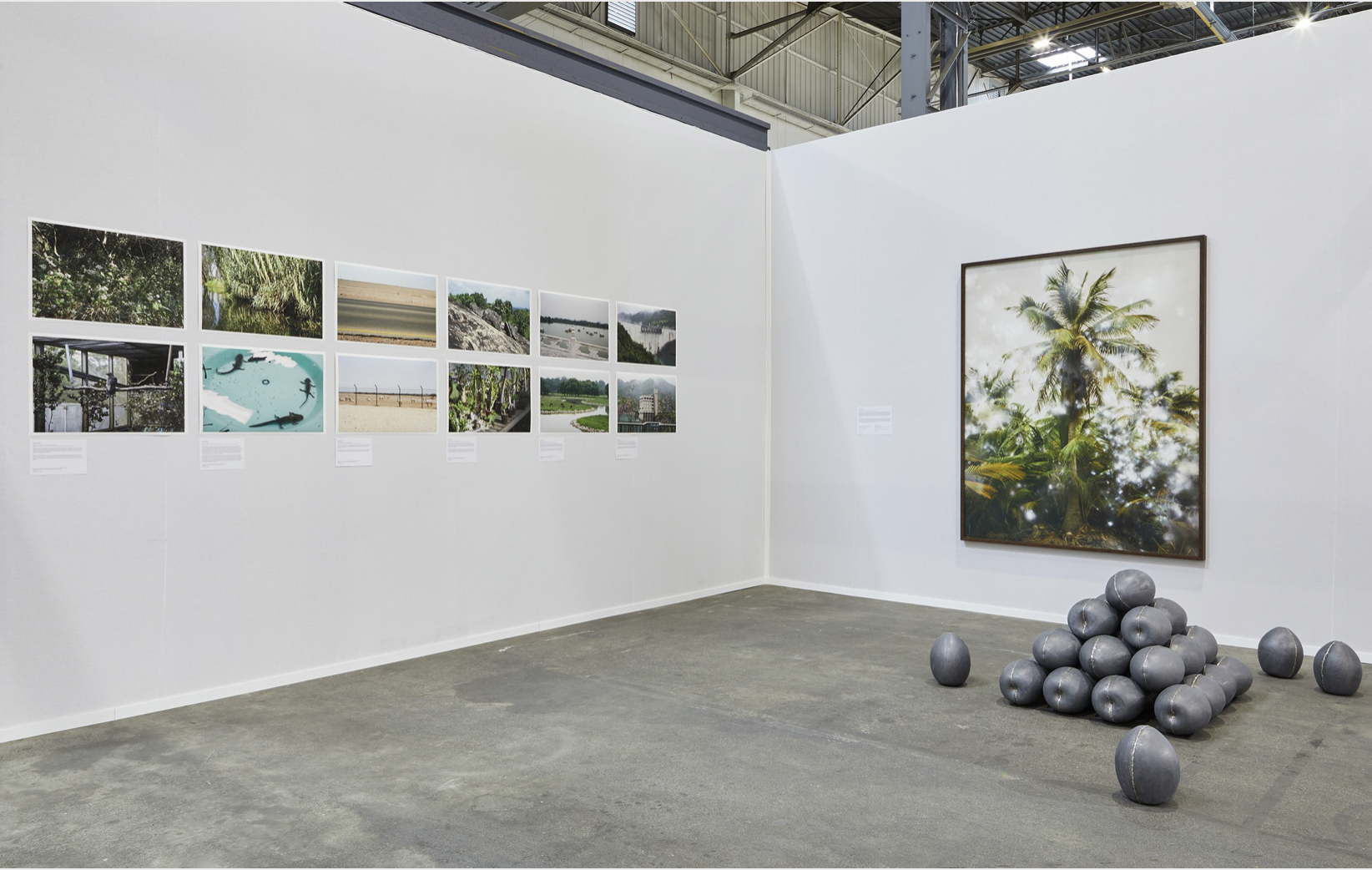From September 3 to 11, the Art of Change 21 association (publisher of Impact Art News) presented Biocenosis21 , a contemporary art exhibition on the theme of biodiversity, at the IUCN World Conservation Congress. After Korea and the United States, it was France’s turn to host this quadrennial congress in Marseille, which brings together thousands of international experts and scientists, in order to assess existing, threatened or extinct flora and fauna. The French government (French Biodiversity Office) and Art of Change 21 created a partnership to include art in the Congress for the first time . Biocenosis21allowed thousands of Congress participants and visitors to discover works that br ought non-human living beings to the fore.

The curator Alice Audouin (president of the Art of Change 21 association and editor-in-chief of this letter) selected 14 French and international artists with a strong sensitivity to living things , and values cent red around ethics. For Biocenosis21 , the artists combined knowledge, science, spirituality, technology , and political commitment to question the place of humans among st other species, and to suggest more egalitarian ways of “living together”.
At a time when the fall in biodiversity is accelerating and when a sixth mass extinction looming, artists are also becoming whistleblowers and the providers of concrete solutions: Michael Wang helps to reintroduce extinct species; Jérémy Gobé tries to preserve the coral reefs; Tomás Saraceno acts in favor of spiders …

The many themes addressed in the exhibition by means of sculptures, photographs, videos, installations and drawings, included the destructive impact of human activities on biodiversity ( Camille Henrot , John Gerrard ); empathy and collaboration between humans and animals ( Tomás Saraceno , Lin May Saeed, Art Orienté Objet ); mourning over the disappearance of living things ( Janet Laurence ), the impact of nuclear energy ( Julian Charrière ); city dwellers ‘ connection to the nature that surrounds them ( Marcus Coates ); the contemplation of the world contributing to its preservation ( Caroline Halley des Fontaines ); the regeneration of living things ( Jérémy Gobé ); the operation and maintenance of living things in human activities ( Michael Wang ); the benefits of microbes , and particularly viruses ( Marie-Sarah Adenis ); deforestation in the Amazon ( Thijs Biersteker ); the common destiny of humans and plants in damaged territories ( Abdessamad El Montassir); the exploration of life in space ( John Gerrard ), and kinship ties between living beings ( Marie-Sarah Adenis ) …
From August 27 th to September 11 th , two artists from the exhibition, Marie-Sarah Adenis and John Gerrard , also presented two works at La Traverse, a multidisciplinary venue in the heart of Marseille devoted to art, gastronomy , and the circular economy . Two events also took place there as part of Biocenosis21, including a culinary event , Food for Art (Marie-Sarah Adenis X Pierre Giannetti X Ruinart ) , and a round table discussion chaired by the exhibition curator.
Alongside the exhibition, round table discussion s were organized within the Congress, inviting the artists of the exhibition as well as other artists, such as Zevs or Ardif , to discuss art and biodiversity in the context of the current ecological crisis.

The social and environmental dimension of the exhibition was reflected in its relationship with audiences and in the means of its own production. Audiences included dozens of school groups, but also more atypical audiences (prisoners, communities from the northern districts, etc.) who were welcomed throughout the event, guided by a specially trained mediator . M embers of UNADEV (National Union of the Blind and Visually Impaired) were also received by the artist Jérémy Gobe ́ for a tactile discovery of his installation. From an environmental standpoint, eco-design was integrated in various ways: as artists were selected from the same geographical area s , transportation was grouped to be eco-friendly , printing solutions were made greener and artists and teams travel led by train. This approach benefited from the enlightened advice of the Karbone agency, founded by Fanny Legros , also a member of Art of Change 21, and a partnership with the Dupon laboratory for more ecological printing.
The exhibition partners were the Schneider Electric Foundation, LVMH, the French Biodiversity Office (OFB), the French Ministry for Europe and Foreign Affairs. The exhibition was also sponsored by Maison Ruinart.
Sibylle Duboc and Pauline Lisowski
October 2021
List of the artists:
Marie-Sarah Adenis
Object Oriented Art
Thijs Biersteker
Julian Charrière
Marcus Coates
Abdessamad El Montassir
John Gerrard
Jérémy Gobé
Caroline Halley des Fontaines
Camille Henrot
Janet Laurence
Lin May Saeed
Tomás Saraceno
Michael Wang
Find conversations with artists from the exhibition Biocenosis21 in issues of Impact Art News:
Thijs Biersteker here
Marcus Coates here
John Gerrard here
Jérémy Gobé here
Janet Laurence here
Lin May Saeed here
Michael Wang here
Credits: Julian Charriè re, Coconut Lead Fondue – First Light and Pacific Fiction, 2016, and Michael Wang, Extinct in the Wild, 2017, Overview of the exhibition Biocenosis21 / John Gerrard, (Flag) Amazon, 2017, Overview of the exhibition Biocenosis21 / Michael Wang, Extinct in the Wild, 2017, Overview of the exhibition Biocenosis21 / Lin May Saeed, Spotted Hyena, 2018, Overview of the exhibition Biocenosis21 / J é r é my Gob é , Corail Artefact, 2021, Overview of the exhibition Biocenosis21 / Caroline Halley des Fontaines, Lightscapes, 2017/2020, Overview of the exhibition Biocenosis21 / Camille Henrot, Not Clean Yet, 2020, Overview of the exhibition Biocenosis21 / P hotos by Jean Christophe Lett and Barth éLemy Thumerelle
Find all the articles from Impact Art News n°33 – September 2021
To subscribe to Impact Art News (free): here

